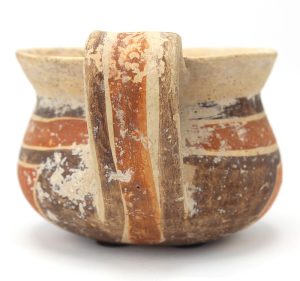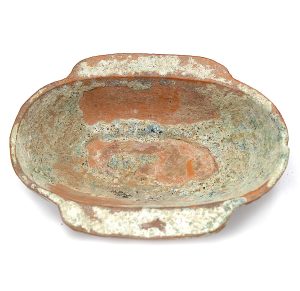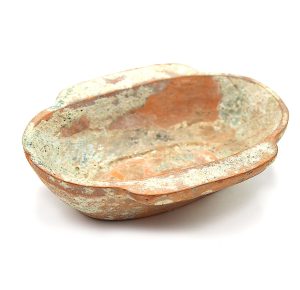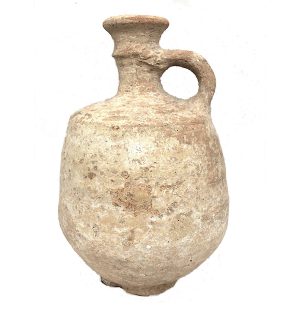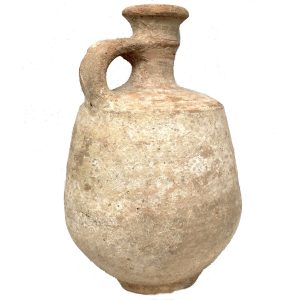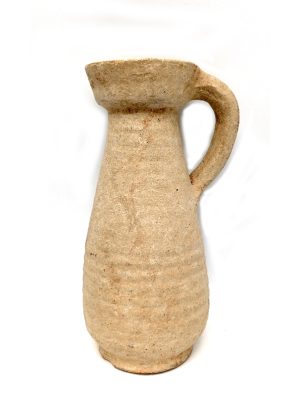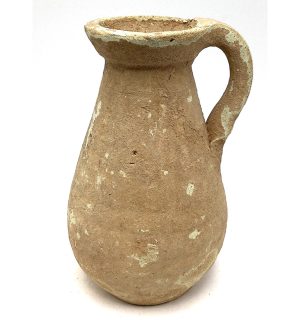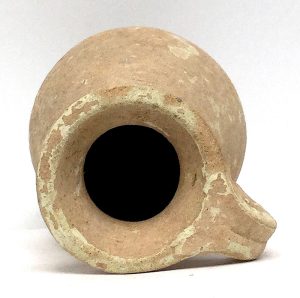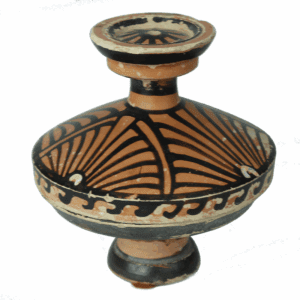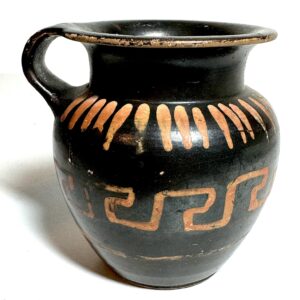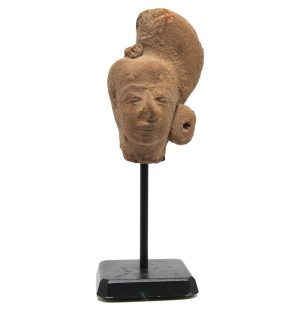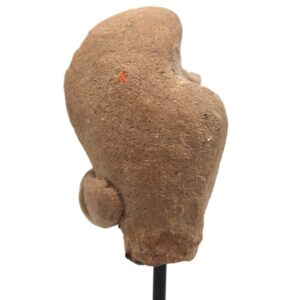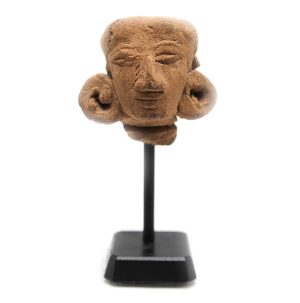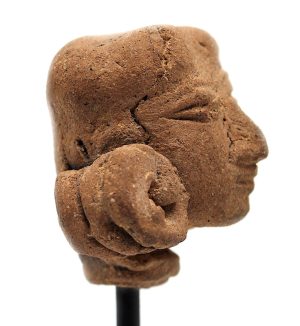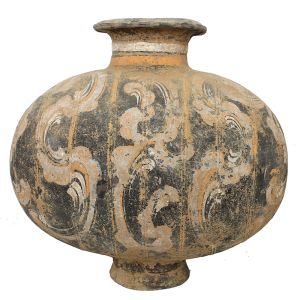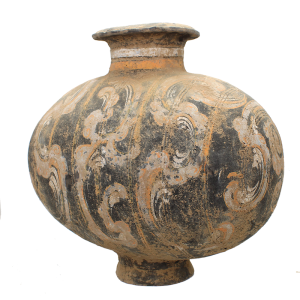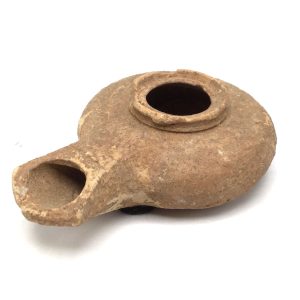Showing 1–12 of 14 results
-
Sale!


$695.00 Original price was: $695.00.$550.00Current price is: $550.00.
H: 3” W: 4.75” D: 4” | FREE SHIPPING IN CONTINENTAL U.S.
This Daunian style earthenware cup was produced in the ancient northern Italian region Apulia, then known as Magna Graecia, from the 6th or 5th centuries B.C.E.. It was covered with beige slip and painted with red, brown and black earth colors in a variety of geometric patterns. Its curved rim and high handle was ideal for pouring liquids like water and wine. The handle may have been repaired as there is an uneven slip underneath it or may have been attached it was painted but it is otherwise in very good condition.
-
Sale!


$450.00 Original price was: $450.00.$310.00Current price is: $310.00.
H: 1.5″ W: 5.125 ” D: 3.875 ” | FREE SHIPPING WITHIN CONTINENTAL U.S.!
Used for rituals and ceremonies, lead green glazed earthenware wing cups were popular burial objects. The tomb’s humidity caused the lead to oxidize to a lustrous, prized iridescent, silver-green.
-
Sale!


$395.00 Original price was: $395.00.$315.00Current price is: $315.00.
H: 2.5″ W: 4.5″ D: 2.375″ | FREE SHIPPING WITHIN CONTINENTAL U.S.!
This diminutive mingqi pig is totally charming and fanciful with an iridescent glaze and would be especially appealing as a send off for the deceased to the nether world or in a contemporary setting. Pigs were especially prized and images were often included as items the deceased would need to live comfortably in the after life.
-
Sale!


$750.00 Original price was: $750.00.$595.00Current price is: $595.00.
H: 8.5” Dia: 5.5” | FREE SHIPPING within Continental U.S.!
Wine jugs from in the Judean Holy Land at the time of the first Jewish Temple were used for religious ceremonies and wine blessing as an important Jewish prayer. This carinated piece was made using the coil construction method and the paddle and anvil technique.
-
Sale!


$295.00 Original price was: $295.00.$195.00Current price is: $195.00.
Ht: 6.25” W: 3.25” D: 2.75” | FREE SHIPPING WITHIN CONTINENTAL U.S. !
Made in Roman North Africa, this small pouring vessel made of durable materials was called coarse wear for everyday use. Elegant in its simplicity It was made with a potters wheel. A fine small piece of history.
-
Sale!


$275.00 Original price was: $275.00.$210.00Current price is: $210.00.
H: 4.5” W: 3” D: 2.75” | FREE SHIPPING WITHIN CONTINENTAL U.S. !
Greek style Oenochoe wine jugs were made in Roman North Africa and exported throughout the empire. Potters wheel made unadorned coarse wears like this small vessel with everted rim were made for daily use and for offerings to deities.
-
Sale!


$595.00 Original price was: $595.00.$450.00Current price is: $450.00.
Ht: 3.5” Dia: 3.5” FREE SHIPPING WITHIN CONTINENTAL U.S.
ancient xenon ware lekanis from Apulia in Magna Graecia, Roman name for the South Italy coastal area. With close-fitting top held cosmetics. Considered fine ware, fathers filled them with jewelry for their daughters’ wedding gifts.
-
Sale!


$595.00 Original price was: $595.00.$475.00Current price is: $475.00.
H: 3.125” W: 3” D: 2.875” | FREE SHIPPING IN CONTINENTAL U.S.
Miniature 4th century BCE elegant xenon Apulia vessel, flared rim and handle, with painted orange geometric designs which may have been a child’s cup or used for votive purposes.
-
Sale!


$195.00 Original price was: $195.00.$135.00Current price is: $135.00.
Ht: 4” W: 1.5” D: 1.75”|FREE SHIPPING WITHIN CONTINENTAL U.S.
Javanese terracotta head part of bas-relief frieze from Majapahit Empire. Most unearthed figures were small decapitated heads with Javanese facial features, hairstyles, large ear ornamentations of upper classes. A great small piece of history.
-
Sale!


$195.00 Original price was: $195.00.$135.00Current price is: $135.00.
H: 2.75″ W:1.375 ” D:1.25″ | FREE SHIPPING WITHIN CONTINENTAL U.S.
Crafted during the Majapahit Empire in Java this rare head was part of a bas-relief frieze decapitated as part of religious offerings.
-
Sale!


$2,150.00 Original price was: $2,150.00.$1,785.00Current price is: $1,785.00.
H: 11.75” W: 12.25” CALL 213-568-3030 OR EMAIL [email protected] FOR SHIPPING.
Families placed cocoon jars with auspicious designs containing magical mixtures of mulberry leaves in tombs for departed’s souls to drink to transform in afterlife.
-


$155.00
Early Christianity oil lamps were also seen as a symbol of light and a manifestations of the presence of the divine.
End of content
End of content


